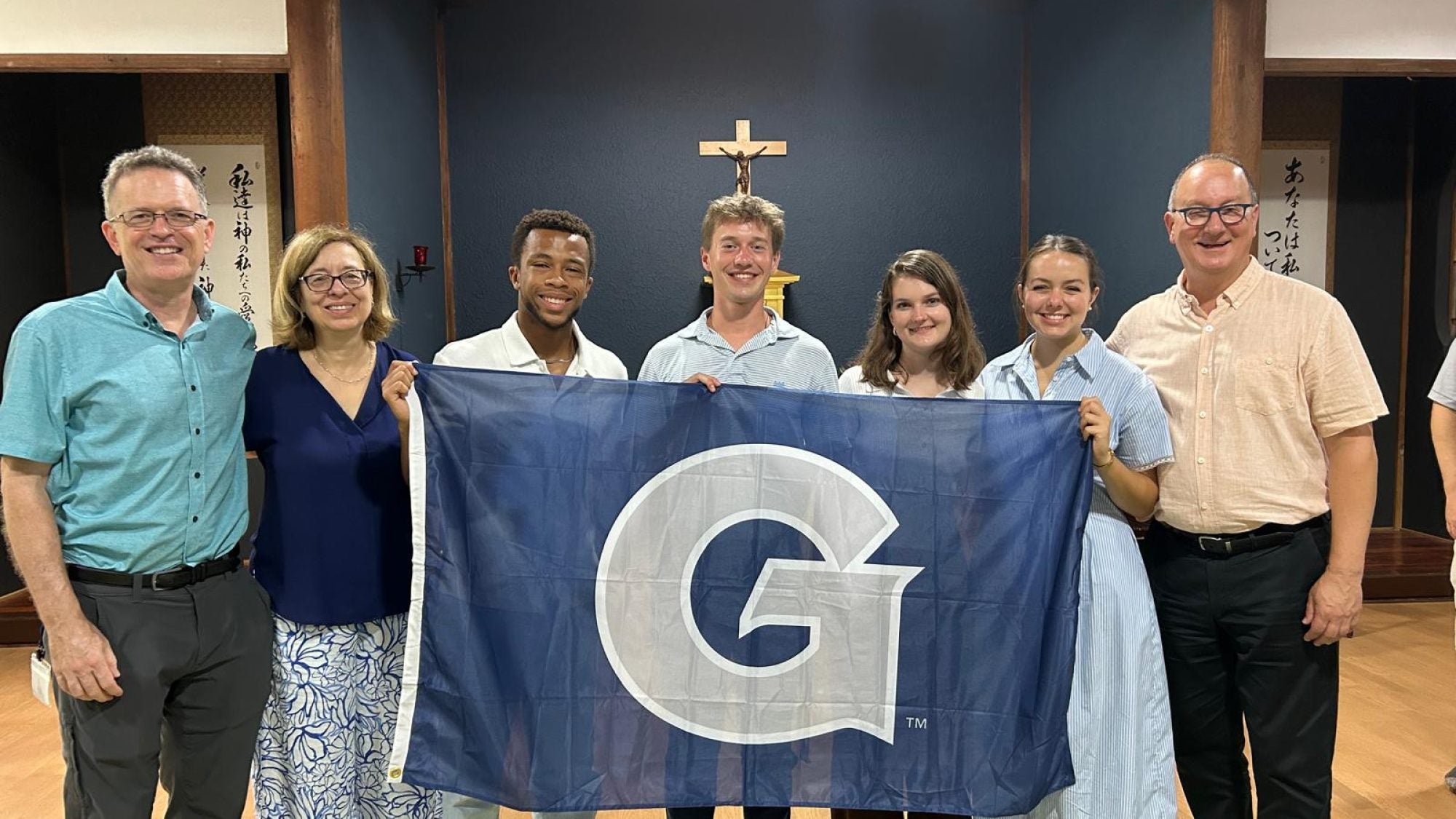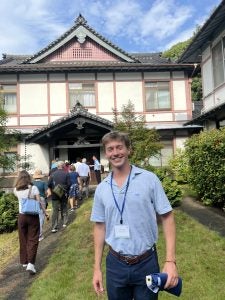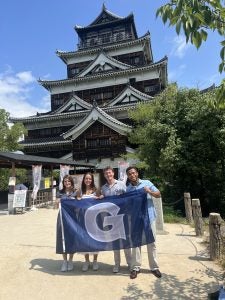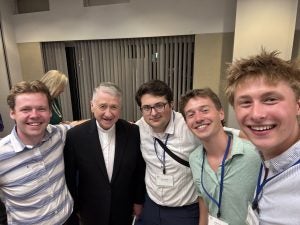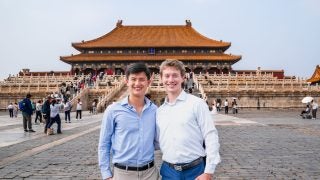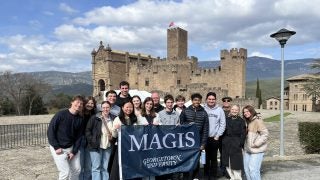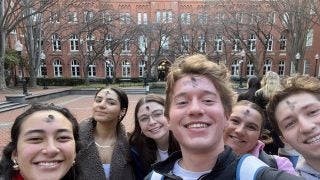Luke Hughes (SFS’27) is a Georgetown Storyteller and junior in the School of Foreign Service studying science, technology and international affairs. He is from Lake Forest, Illinois.
Three years before his passing, Pope Francis stated clearly: “The use of nuclear weapons, as well as their mere possession, is immoral.” This simple message clarified the Catholic Church’s doctrine on the formidable technologies. In this vein, Pope Francis called the broader faith community to protect humanity from the dangers of atomic weapons. 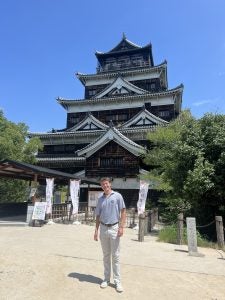
I answered this call throughout the past weekin the Pilgrimage of Hope to Japan to honor the 80th anniversary of the atomic bombings of Hiroshima and Nagasaki. This weeklong experience was organized by the Partnership for a World Without Nuclear Weapons, an organization founded by the bishops of Chicago, Washington, DC, Hiroshima, and Nagasaki. Alongside 50 other students, faculty, and academic leaders from Catholic universities both in the U.S. and Japan, I deepened my own understanding of the events of August 1945, honored the lives lost and gained a renewed appreciation for how I can turn to my Catholic identity to create a world of peace.
As a student of Jesuit education at Georgetown, I learned how to employ my skills to be a servant to the world. I have been encouraged to meet those who are thousands of miles away but who are not all that different from me. This pilgrimage was an opportunity for me to practice two key components of my identity: my global citizenship and Catholic faith.
Honoring the Victims of Hiroshima and Nagasaki
Our delegation attended Mass and remembrance events on Aug. 6 and Aug. 9, the exact dates of the bombings of Hiroshima and Nagasaki, respectively. These services included testimonies from survivors, known as “hibakusha,” laying of wreaths and flowers, and messages from political and faith leaders. I will never forget the emotion that overcame me during the moment of silence at 8:15 a.m. during Mass on Aug. 6, the exact moment the bomb fell just a few hundred meters from where we were.
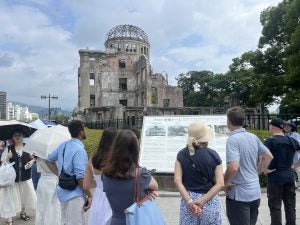
At numerous museums, our delegation learned about the public health and environmental effects of the atomic weapons on Hiroshima and Nagasaki, at testing sites in the Marshall Islands, and back in the U.S. at the Los Alamos National Laboratory. These experiences throughout the pilgrimage provided me with opportunities for intense reflection. I considered how the world must ensure that scientific innovations have the sole purpose of benefiting humanity, and that those negatively impacted by new technologies are protected from discrimination.
Academic and Cultural Enrichment
Through bites of gyoza and sips of green tea, we learned a great deal about Japanese culture. Visits to various Catholic churches and other sites deepened my knowledge of St. Francis Xavier’s arrival in Asia in the 16th century and the subsequent spread of Christianity in the region. These unexpected moments of grace were moments when I bonded with my Japanese friends over our shared faith traditions.
As a student studying science, technology, and international affairs, this pilgrimage was filled with connections to my experiences inside the classroom. After learning about nuclear power in classes such as Science and Technology in the Global Arena, I felt prepared to engage in discussions around the potential uses of nuclear energy while also learning from experts that joined us. It is times like these when I remember why I chose Georgetown. Students in the School of Foreign Service are constantly deepening their knowledge of complex subjects through experiences outside the classroom.
